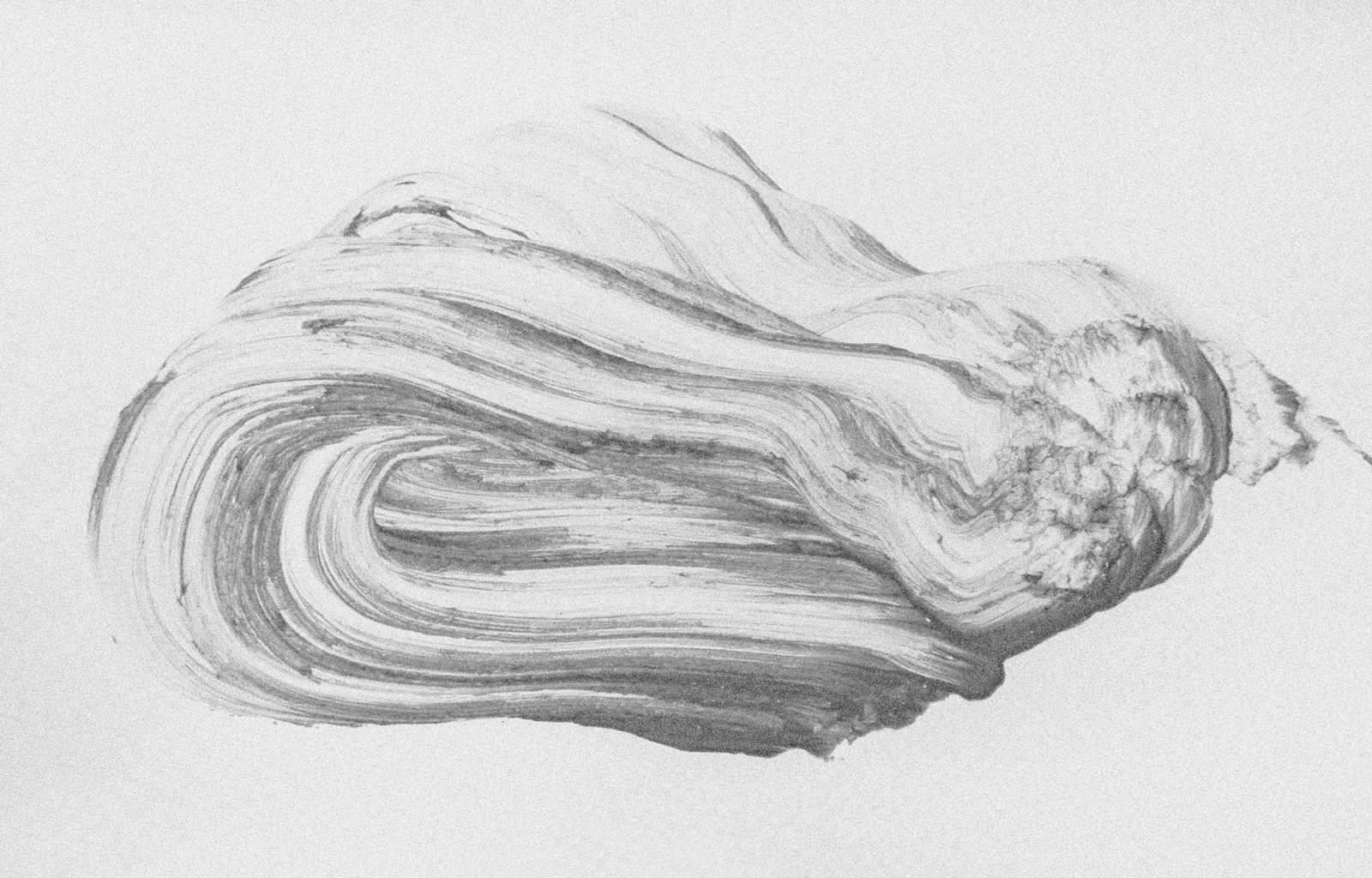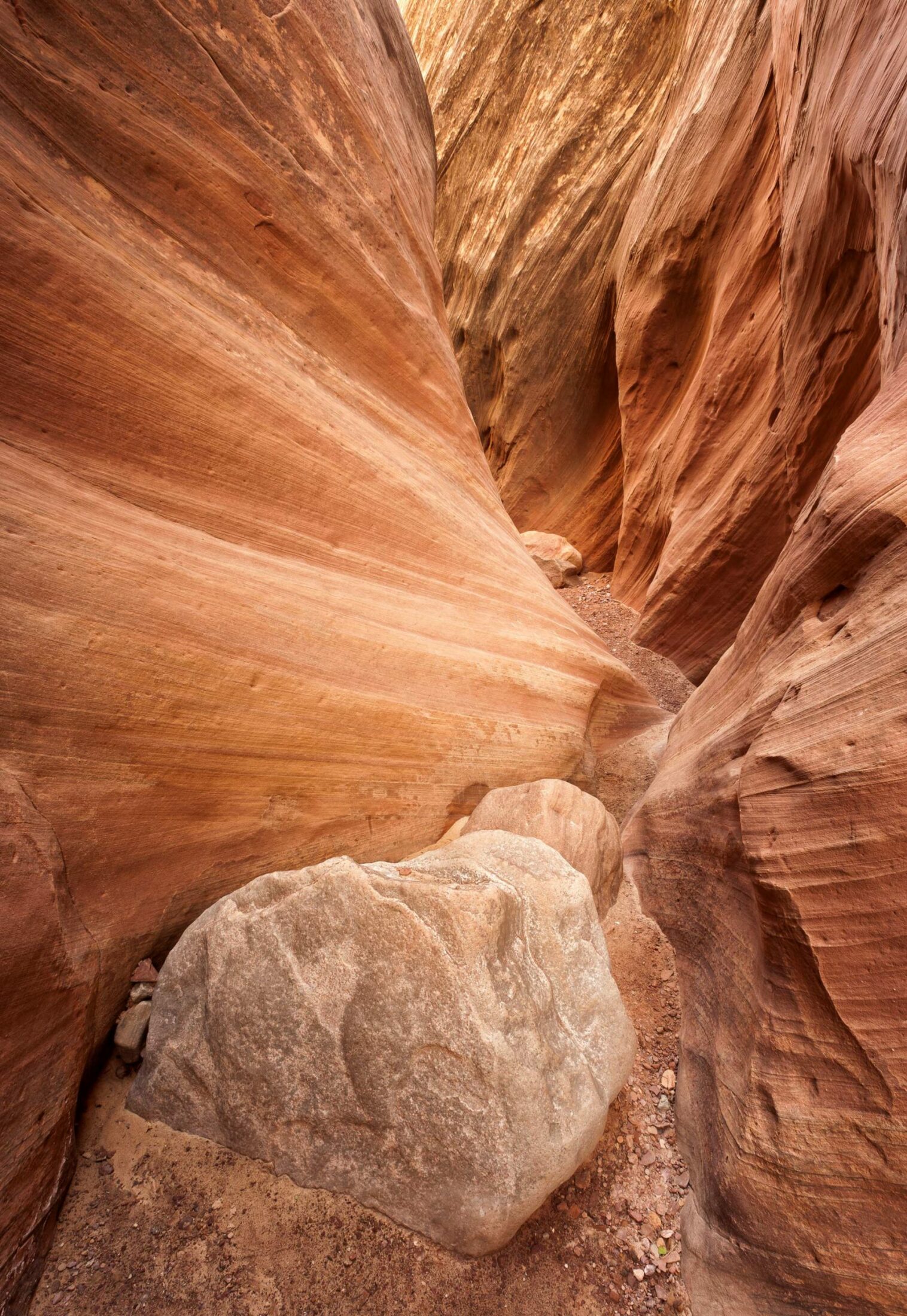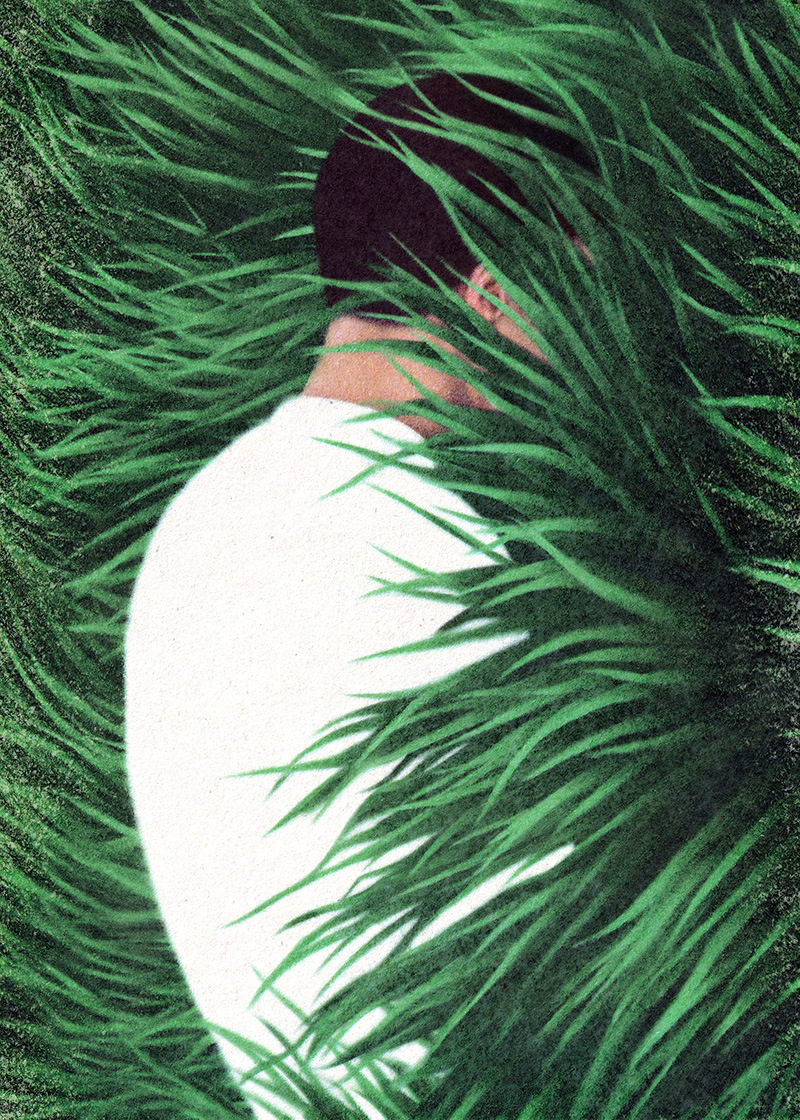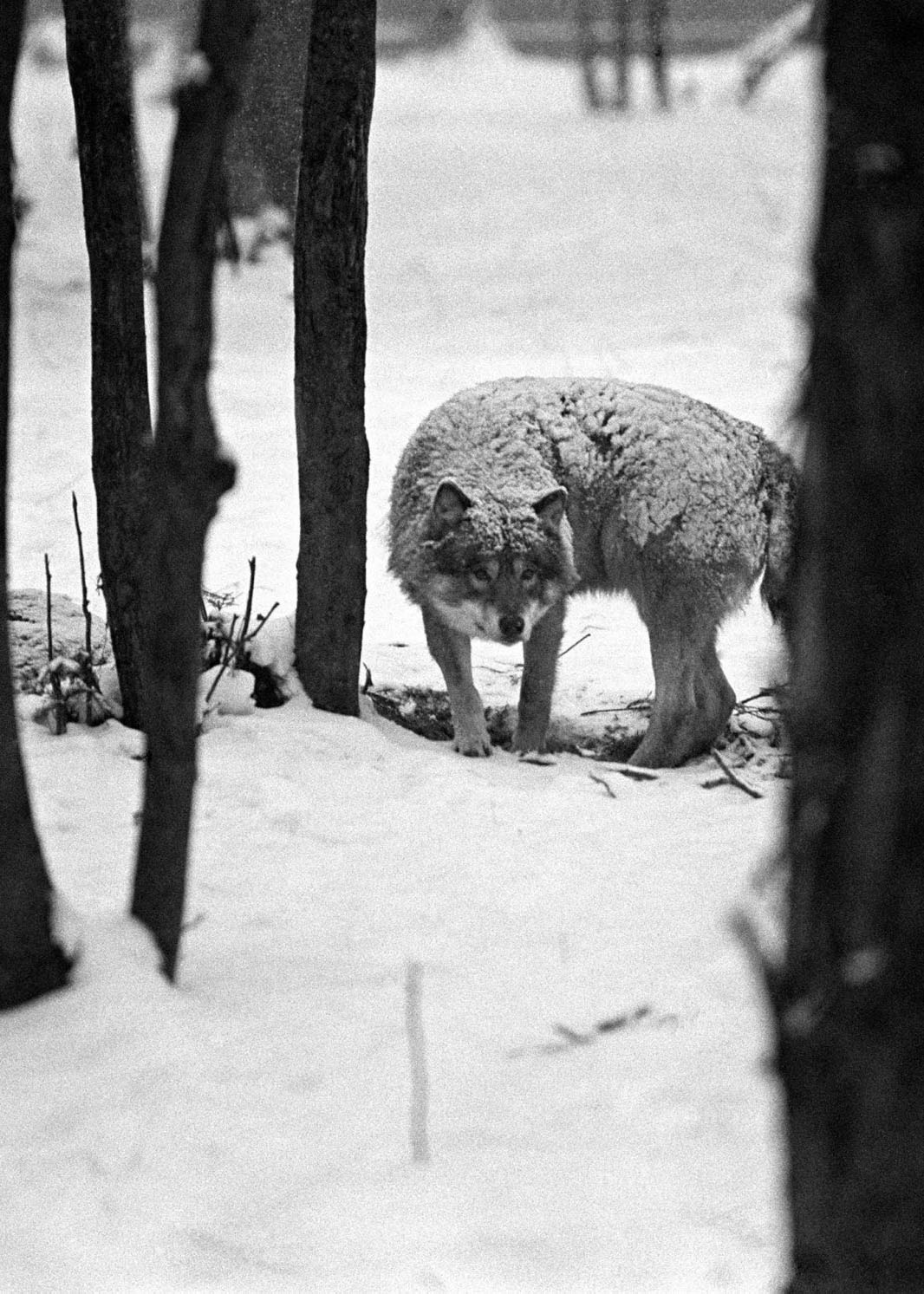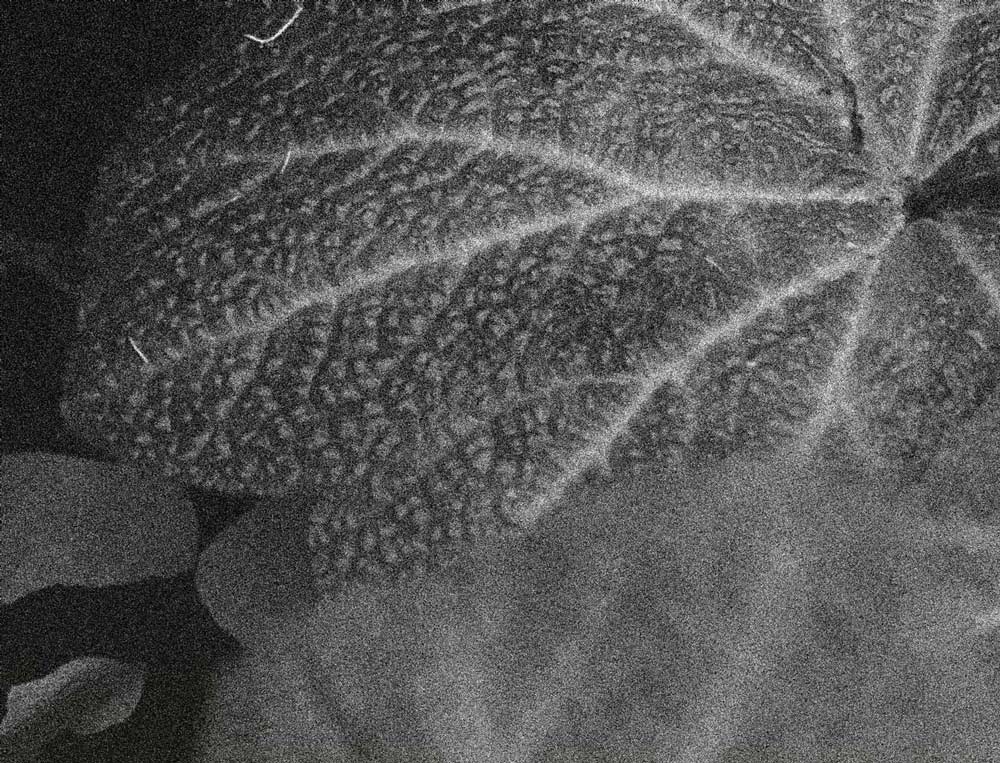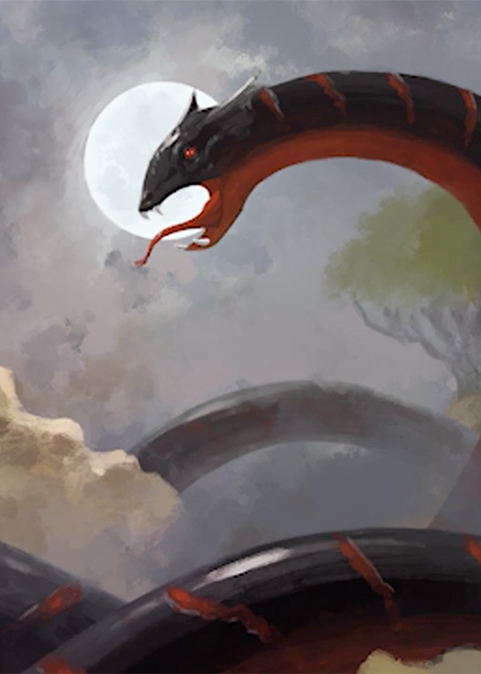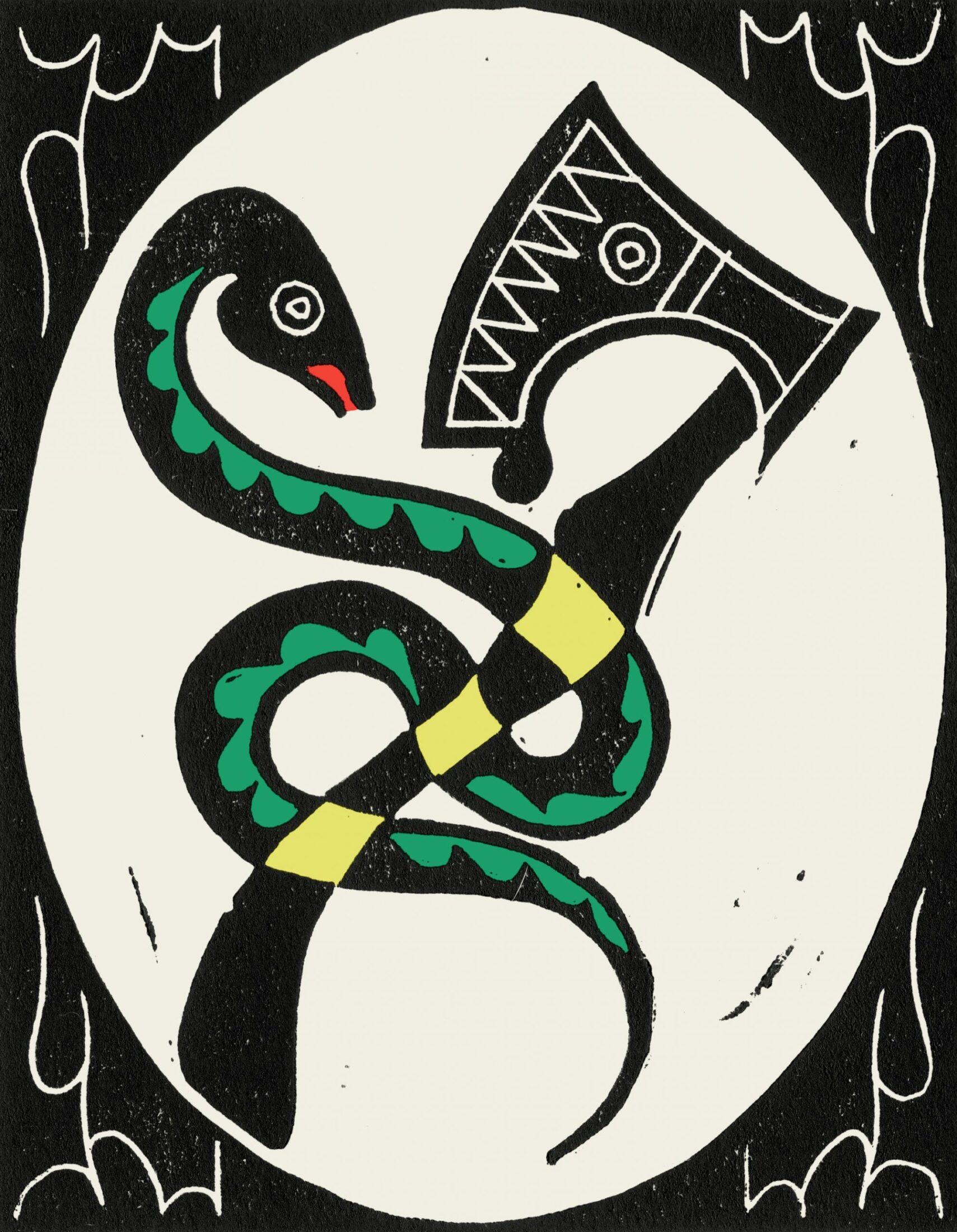
Nick Hunt is a writer, journalist, and storyteller. His books include Outlandish: Walking Europe’s Unlikely Landscapes, Walking the Woods and the Water, Where the Wild Winds Are, The Parakeeting of London, and Red Smoking Mirror. His writing has also appeared in The Guardian, The Irish Times, The Economist, Aeon, New Internationalist, Noema, Literary Review, and Resurgence & Ecologist, among others, and has been included in The Best British Travel Writing of the 21st Century. Nick is a recipient of the Royal Geographical Society Journey of a Lifetime Award and is a contributor and co-director of the Dark Mountain Project.
Studio Airport, founded by Bram Broerse and Maurits Wouters, is an interdisciplinary design studio that ventures out into the cultural ether to forage for anomalies, creating work that spans art, culture, science, and ecology. In addition to Emergence Magazine, their creative partners include the Design Museum, See All This Art Magazine, Slowness, Normal Phenomena of Life, and Sapiens Magazine. They serve as master tutors at the Design Academy Eindhoven and were recognized as European Agency of the Year 2024 by the EDA.
Tracking Europe’s great winds, Nick Hunt explores the mythological understanding of winds as gods, experiencing their power firsthand as cause for awe, exhilaration, and fear.
Wading ankle-deep in snow, I climbed Mount Mosor. The frozen path switched back and forth up a steep powder slope that hid the summit from view, so I couldn’t see what lay above. But I could hear it. Something vast was happening there. It bellowed, throbbed, and boomed. Behind me lay the lower world—the sprawling port of Split and the long Dalmatian coast, the brightly gleaming Adriatic ruffled into fanwise waves—but above was only noise, gigantic and disturbing. Gyrating clouds of icy spindrift lifted, scattered, and dispersed in whirling vortices, as if the mountainside above was being torn up and remade. My feet approached the final crest and the noise became psychotic.
I had come to Mosor in order to meet a god.
I had tracked him for three weeks, from Trieste in Italy’s northeast over the Slovenian Karst, an arid limestone plateau riddled with caves and sinkholes. I hadn’t found him there, though I had seen plenty of clues to his presence: pine trunks twisted to the south, hams hung to cure in the frigid air, and the heavy karstic rocks placed on rooftops to weigh down tiles which Slovenians call golobica, “little doves.” I had followed this trail of signs into Croatia’s Velebit Mountains, part of the Dinaric Alps that run parallel to the sea, to lose myself in a blinding blizzard that didn’t let me go for two days. Frozen, soaked, and hopelessly lost, I had sheltered in a mountain cabin while the storm attacked the walls, but despite the raging elements I hadn’t found him there either. A little desperate now in my search, I had left the mountains for the sea, making my way down the chain of parched Adriatic islands with names like Krk, Rab, and Pag—places where, some years before, he had lifted fish from the waves and scattered them dead upon the beaches, like an apocalyptic vision of end times. But he wasn’t up to those tricks now, and no one could say when he might return. In his absence a rival power had moved in from the south: a soupy, enervating haze that blurred the sky to muddy brown and caused the locals headaches and phlegmy breathing problems. Downcast, I had almost given up.
Then the wind changed.
The Bora is one of Europe’s great named winds, a bitter northeasterly that funnels through the passes, or “mouths,” of the rugged mountains along the Balkan coastline. It can strike the coast at hurricane strength, leveling forests, smashing houses and hurling trucks on their sides, closing bridges and motorways, tearing down olive trees, and driving giant waves offshore to wreak havoc on the shipping. It can be extremely cold, covering everything in its path in glittering crystalline ice formations—such as I was seeing now, furring the northeast side of every tree and blade of grass, as if Mosor and everything on it had been perfectly bisected. But despite this outrageous violence and the devastation it brings, the Bora is enthusiastically welcomed by many in its path, associated with vitality, purity, and good health. At least one city, Trieste, even celebrates its own Bora festival. It sweeps pollution from the air and ushers in bright, golden light, giving everything an almost hyperreal clarity, so the smallest details stand out in perfect focus. That light was all around me now. I climbed uphill in radiance towards the final rise.
What links this phenomenon with a god? The clue is in the name.
The Bora (or the Burja to Slovenians, the Bura to Croatians) derives its name from Boreas, the Greek god of the north wind. Before making my way along this coast, I had visited his shrine in Athens in the ancient Roman Agora near the Acropolis. Over two thousand years old, the octagonal Tower of the Winds captures his image in marble relief: a scowling, bearded old man fixed horizontally in flight, pleated tunic fluttering, wings sprouting from his back, bearing a conch to signify the howling of his voice. He is not alone up there. He is one of the eight Anemoi, the gods of the wind who take their name from anima, “breath” or “soul”—from which we also get the words “animate,” “animal,” and “animism.” (Other languages make similar connections between wind, spirit, and breath, including the Latin spirare, the Hebrew ruach, the Arabic ruh, and the Slavic dukh, reflecting ancient animism in everyday conversation.) His brothers are Notos in the south, Eurus in the east, Zephyrus in the west, Lips in the southwest, Skiron in the northwest, Apeliotes in the southeast, and Kaikias in the northeast. But Boreas is the oldest, the fiercest, and the greatest. Associated with the coming of winter, the icy breath of the savage north, he is also a generative god; in an earlier incarnation he appeared as the wind-serpent Ophion, who coupled with Eurynome, the mother of all things, to bring life into being. His potency was so great, it was popularly believed, that mares positioned with their hindquarters to the north would fall pregnant; an aeolian version of immaculate conception.
Calling the Anemoi gods of the wind is not quite accurate, however. One did not control the other. There was no neat separation. To the men and women who came to the tower to offer flowers, make sacrifices, or consult the spinning weather vane—long since vanished from its roof—the gods and the winds were not separate entities but one and the same, indivisible from the compass directions from which they came. Boreas was god-wind-north, north-god-wind, wind-north-god, wrapped into a single phenomenon. I was climbing the slopes of Mosor to encounter all aspects together.
I stuck my head over the crest and immediately ducked down again. The blast was so intense it hurt. I couldn’t look at it. Shielding my face with a gloved hand, I advanced in a stoop, dropping almost to a crawl against its strongest rushes. My face grew freezer-numb. My nose hairs became brittle. The flying spindrift leapt like smoke, making it appear as if the mountainside was on fire. Stunned, I waded into sound. It was exhilarating. But underneath the wild joy of finding what I’d come to find—Boreas/Bora in full force, pummeling and thundering—there was something else as well. Awe, but also fear.
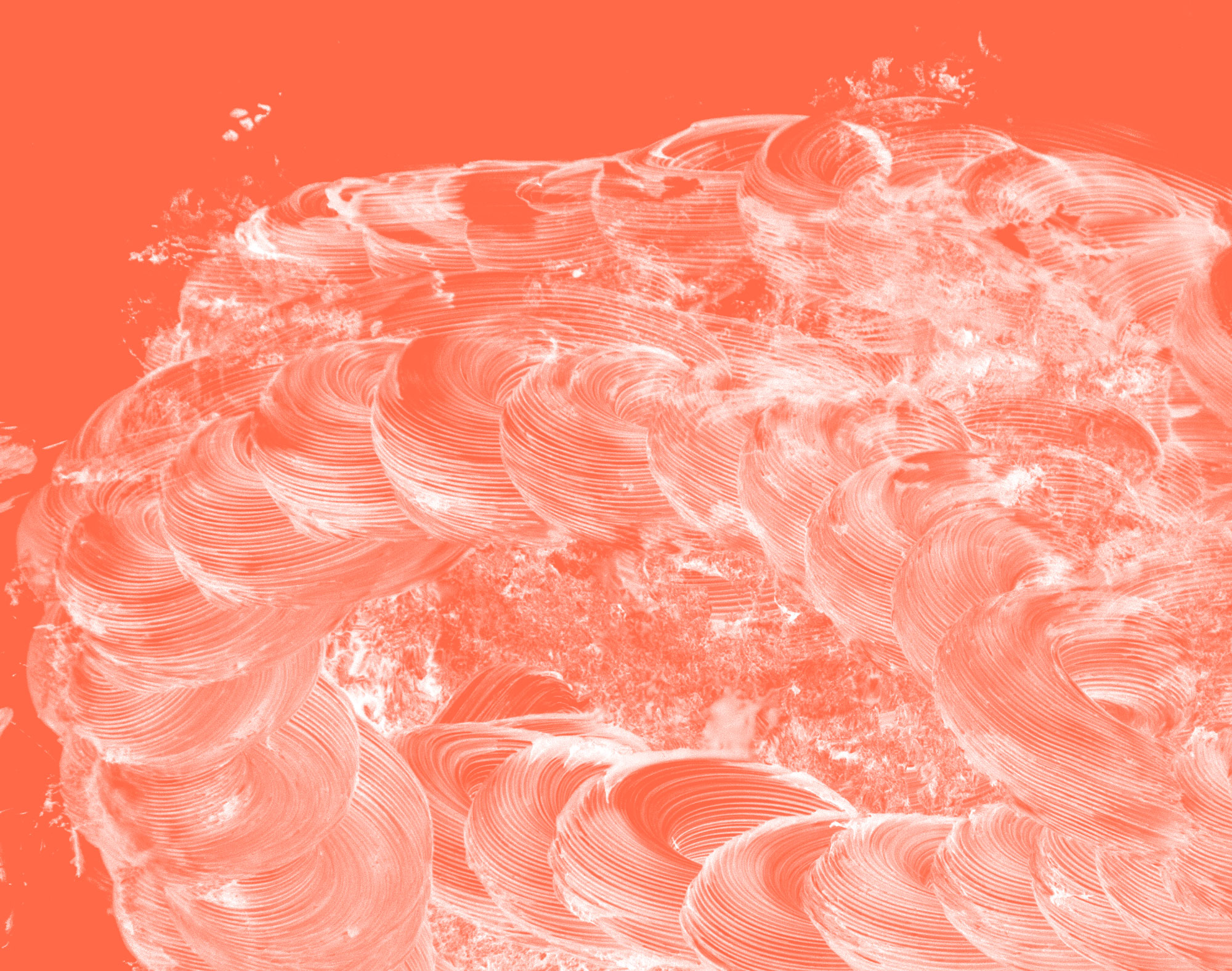
All my journeys into wild winds began with names. I saw them on a map of Europe made unfamiliar by arrowed lines—swooping north, south, east and west, down rivers, through mountain ranges, over seas and national borders—depicting the seasonal corridors of these great unseen forces that shape the continent and its cultures, often in unexpected ways. The names had a fairy-tale quality—the Bora, the Foehn, the Sirocco, the Helm, the Mistral, the Levanter, the Meltemi, the Kosava, the Lodos, and dozens more—which suggested invisible roads to follow, connecting regions that seemed quite separate in my mind. I wanted to see the effects they had on the landscapes, and the living things, over which they blew.
In one respect I didn’t need to leave home to find this out. As every school teacher knows, wind makes creatures wild. On windy days the usual behavioral rules are overturned—playgrounds are transformed into juvenile bacchanals, something between a carnival and a riot. Owners of dogs, cats, and horses see their animals grow skittish, fretful, and excitable, rippling with nerves. Birds clatter in agitated flocks, assailed by unseen currents. Normally quiet streets in prim suburban towns are seized by agents of misrule: doors slam; shop signs swing; leaves, litter, plastic bags, scraps of paper, dust, and debris sweep in tornados down the road; umbrellas turn inside out; hats are whipped off heads and sent tumbling, provoking slapstick chase sequences; previously unregarded objects bang, flap, rattle, and beat crazily against their fastenings, as if trying to break free of everything that constrains them.
Another of Europe’s great named winds, the bitterly cold Tramontana—common across the south of the continent from Greece to Spain—contains an etymological clue to wind’s inherent wildness. Its name comes from transmontanus, which means “from beyond the mountains”; the mountains being, to Latin speakers, the Alps that protected Italy, and the civilization of Rome, from the barbarian cultures that hemmed it to the north. South of the Alps meant cities, roads, literacy, and the rule of law; north of the Alps meant shaggy Germanic warriors in impenetrable forests, tattooed Gauls—and worse, Britons—worshiping unknown gods, and fierce Scythian horsemen marauding over endless steppes. To feel the cold north wind on your face was to be reminded of those wild lands and the menace they represented, and over time the word Tramontana took on a wider meaning, becoming synonymous with anything that was barbarous or foreign. The wind, with its disruptive effects, was a threat from beyond the boundaries of civilization.
It still is.
In addition to their more obvious impacts—uprooted trees, smashed roof tiles, wrecked ships, ruined crops—many winds are associated with darker, weirder symptoms. Not for nothing is the Mistral, which can rage for weeks on end in the south of France, known as the “wind of madness.” There is a reason California’s Santa Ana is called the Devil Wind. There is evidence to suggest that accident, suicide, and even murder rates spike when certain winds blow, though this is impossible to prove; there is plenty of correlation, but causation is another matter. These baleful accusations hover in the hazy zone between biometeorology—the scientific study of the effects of weather on living systems—and myth.
From my own experience, I have reason to believe them.
Let me introduce you to another god.
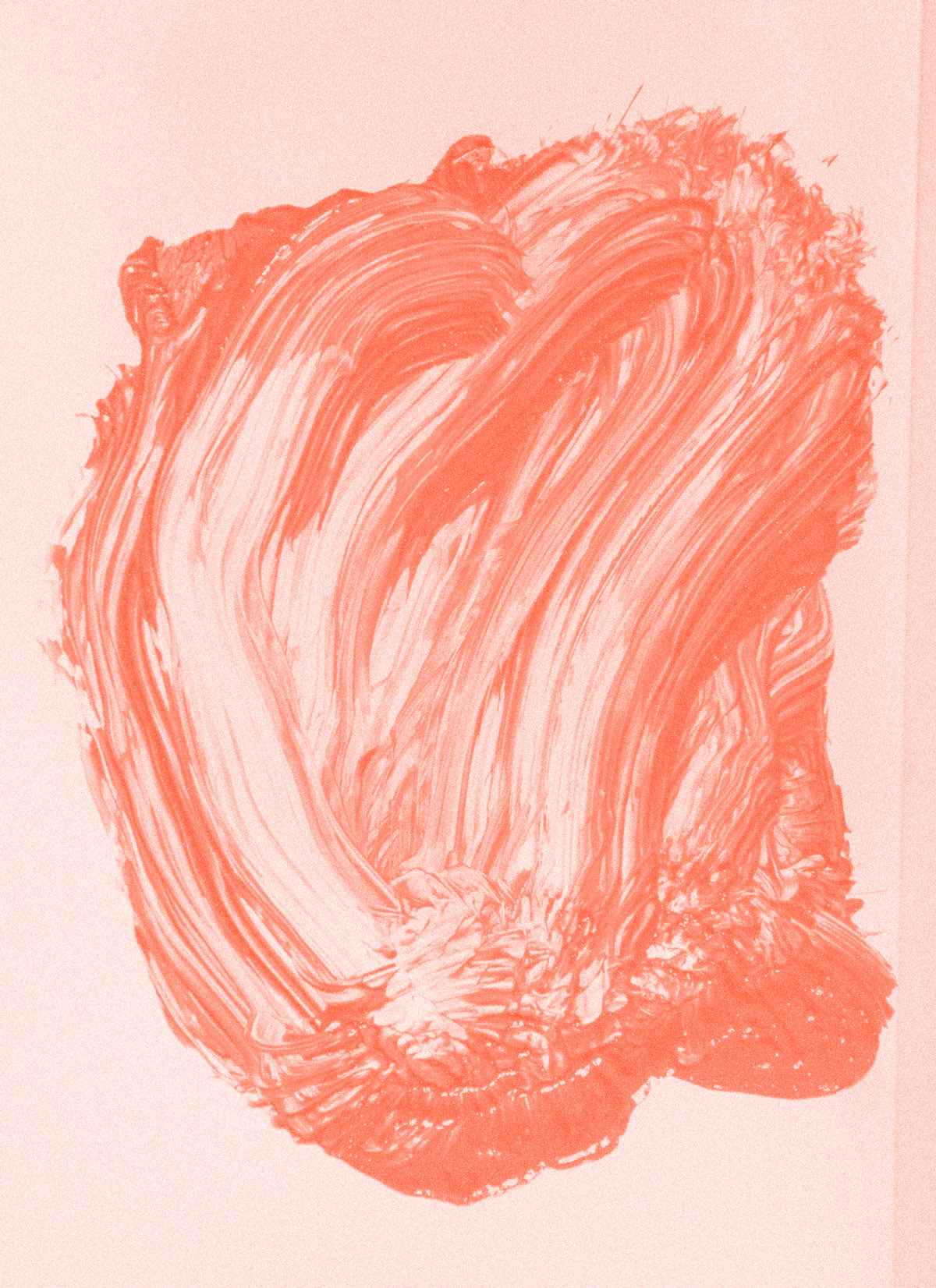
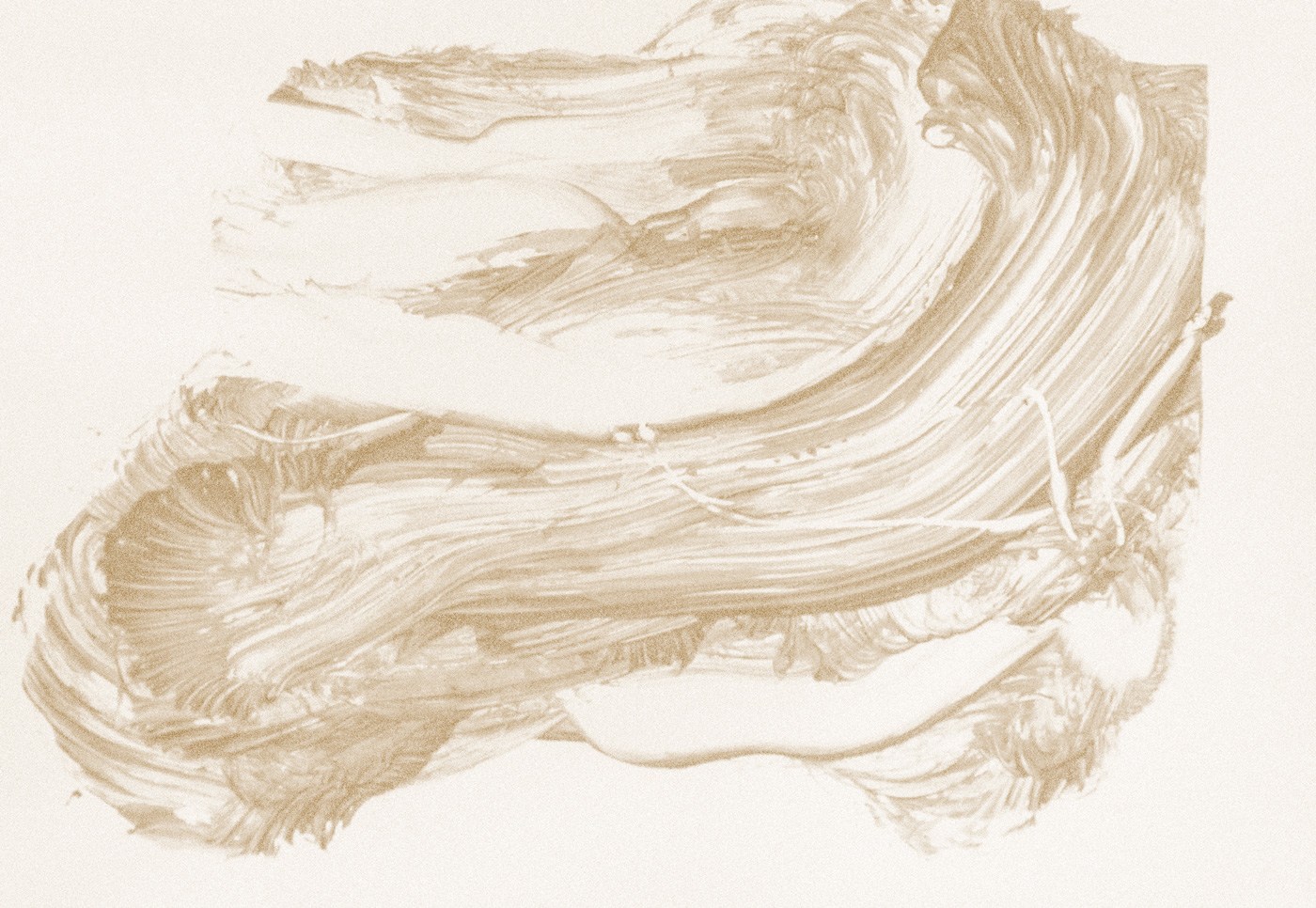
Wind makes creatures wild.
Once upon a time, Zephyrus—god-wind-west, west-god-wind, wind-west-god, whose name means “breeze”—fell in love with a handsome youth called Hyacinth. Unfortunately, he had competition of the toughest kind: his rival was Apollo, god of the sun, music, and poetry, and a being of outstanding beauty. Hyacinth chose Apollo. Who wouldn’t? Zephyrus went mad with jealousy. While the happy pair were sporting together, tossing a discus back and forth, the wind god took his revenge: he blew the discus off course to smash into Hyacinth’s head. Because the murder was a crime of passion, Zephyrus received protection from Eros, god of love, in return for his service; ever since then he has been associated with fertility, romance, and the coming of spring (the Tower of the Winds depicts him as a fresh-faced young man bearing fruits and flowers). Grief-stricken Apollo had to make do with creating the hyacinth flower out of his beloved’s blood, to remember him by.
In that sad struggle, wind won.
The Romans—who worshiped the Venti, counterparts of the Anemoi—knew Zephyrus as Favonius, whose name meant “favorable.” Today, in the Italian Alps and Italian-speaking areas of Switzerland such as Ticino, spring is heralded every year by the stirring of the Favonio, a warm blast that melts the snow and brings greenness to the valleys. In German-speaking regions, this wind has a different name, or names. Informally it is known as Schneefresser, “Snow-eater”; Maisvergoldener, “Corn-goldener”; and Traubenkocher, “Grape-cooker,” in tribute to its warmth. Its true name is the Föhn, or Foehn.
It was the beginning of spring and I had been on its trail for a fortnight. I had started my search at the point where the Rhine flows into Bodensee, where Switzerland borders Germany, Austria, and the tiny principality of Liechtenstein, and walked upstream against the river’s flow into the mountains. The Foehn is a valley wind, blowing downslope from Alpine peaks. Following tip-offs from local informers and helpful meteorologists, I had progressed from east to west in a rough zigzagging course, making my way up one valley until I could climb no more, crossing the mountains by the nearest pass—often by train, as the walking trails were buried deep in ice—and then descending the neighbouring valley to start the process again. For that first part of the journey, the Foehn stubbornly refused to blow, but, as with the Bora, clues to its influence were everywhere: in landscapes, in agriculture, and in people’s stories.
Like schizophrenic Zephyrus—half-benevolent bringer of spring, half-jealous murderer—the Foehn has two very different faces, one sweet and one vengeful. In addition to ripening crops, making passes navigable and high valleys habitable, sweeping clouds from the sky and ushering in vibrant light, every year it leaves a trail of scorched-earth devastation. Because the wind has dumped its moisture as it ascends one side of the Alps, when it descends the other side (which meteorologists call the “rain shadow”), it is not only parched but warm, drying the resinous pine forests of the foothills to tinder. The smallest spark can start an inferno, turning forested mountainsides into orange walls of flame and razing entire villages, with their prettily timber-framed houses. As I walked I saw signs warning of the dangers of smoking cigarettes during the Foehn, and until a fire service was established, the streets were patrolled by a Foehn Watch, who had the power to enter people’s homes to douse their fires. An alternative etymology of Foehn—intriguingly interwoven with the godly Favonious—is the Gothic fôn, which simply means “fire.”
As well as frequently burning down vast swathes of this beautiful country, the Foehn affects the Alpine valleys on a deeper, psychic level. Meandering from village to village, I recorded people’s stories. There was a clear theme. Some people said they couldn’t sleep because of the ceaseless agitation. Others were bothered by the warmth, waking up covered in sweat. One woman said she experienced nosebleeds. Others reported breathing problems due to pressure fluctuations. But mostly people complained of stress; fretfulness; anxiety; nerves; irritability; angst; paranoia. Older people tended to feel enervated and depressed—“as if life has been sucked out of me,” one man in his sixties said—while younger people became volatile and prone to flashes of anger. One woman simply described it as “a weirdness.” These are not fringe experiences. Of the dozens of people I talked to during weeks of walking—shopkeepers, guesthouse owners, barmen, generous hosts, farmers, rambling drunks, mountaineers, fellow walkers—I met only one or two who did not report negative symptoms; and even those rare exceptions knew plenty of people who did.
The German language is renowned for having a word for everything, so of course this condition has a medical name: Föhnkrankheit, “Foehn-sickness.”
I eventually met my Foehn in the Haslital Valley. I walked south from the village of Meiringen—a romantic painting of a place, where flowers bloomed on the windowsills of houses as cute as cuckoo clocks—towards the snowbound Grimsel Pass, through forests and past waterfalls tumbling down moss-covered rocks. Right on schedule, exactly when the forecast had predicted it, this witches’ wind began to blow: a bellowing, relentless roar that did not come in gusts but in one continuous current, ceaseless and undeviating, so strong that walking into it was like wading through heavy liquid. The pine trees bent like rubber, emitting hoots and moans. Before long sweat was flowing down the inside of my clothes; there was something uncanny about feeling viscous heat pouring from the direction of frozen mountaintops, as if some fundamental law had been inverted. I fought my way to a smaller, shabbier village some miles ahead and from there to the higher valley that lay above it. Here, steep rocky walls channeled and concentrated the Foehn so much that I could hardly stand. It was exhilarating. Despite the exhaustion of the struggle, my body sang with energy, filled by the power of the wind, which became my power. I had found what I had walked so long to find, and I was elated. Taking cover behind a boulder, I watched distant avalanches crack and boom in surging plumes down faraway mountainsides, set in motion by the Snow-eater’s warming work. This was truly the action of a god. Before my eyes the Foehn was turning winter into spring.
There was no other word for what I felt but “awe.”
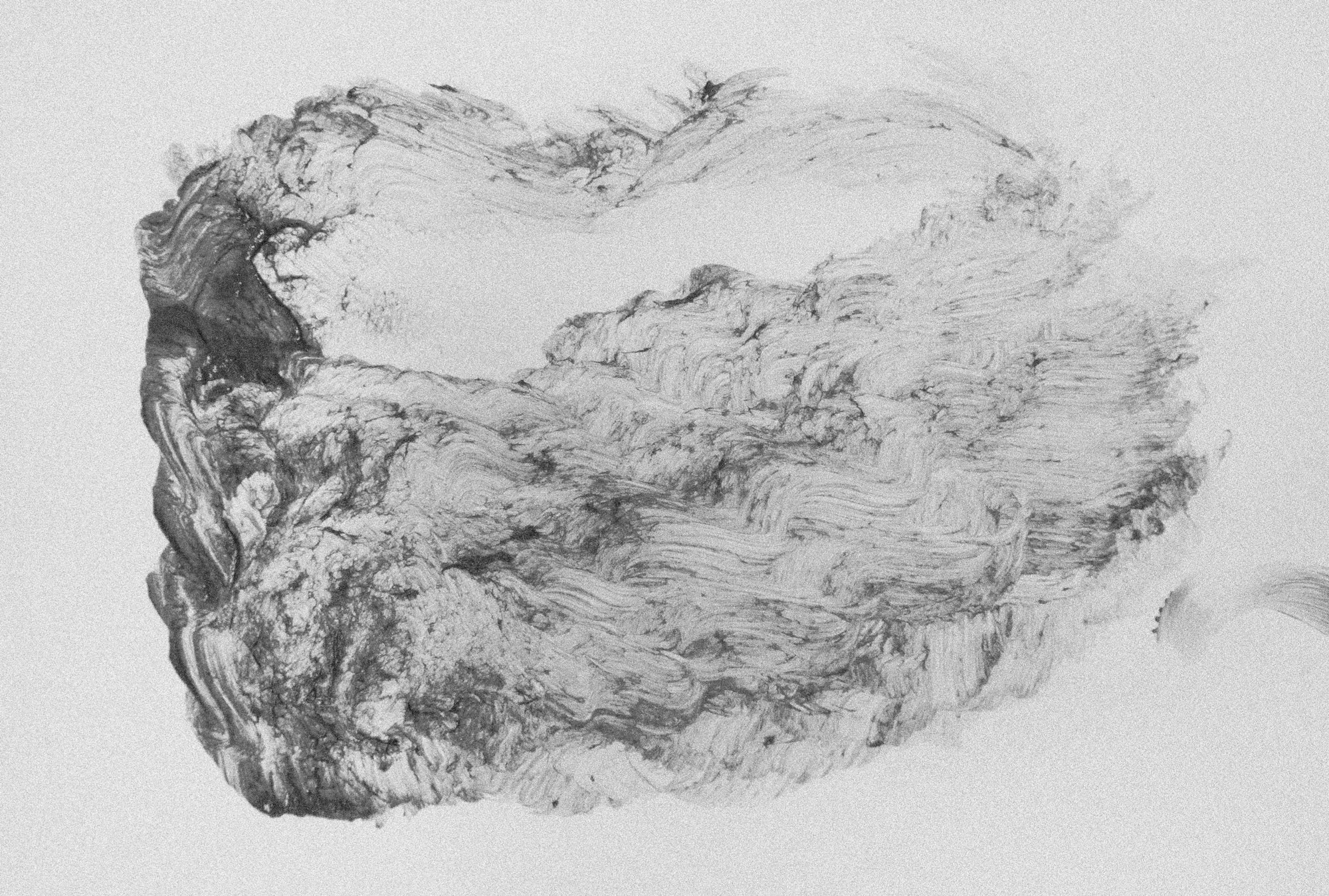
The next morning I awoke to a very different feeling.
The Foehn was still in full flow, hammering all before it. The valley had a scoured appearance, as if its topmost layer had been stripped to reveal something raw beneath. There was no respite. I felt that somewhere, something had gone extremely wrong.
This feeling only increased as the day progressed. I left that valley and walked with the wind—a bullying hand at my back—the way I had come the day before, through woods and fields to Meiringen, but despite the fact that it was downhill, and the wind was behind me, exhaustion brought me to a standstill every fifteen minutes. Overnight I seemed to have become utterly pathetic. My feet dragged; my muscles ached; my motivation faltered. I felt like curling up in a ball and going to sleep for a week. At times I wanted to cry. The green grass and the brilliant light, the dazzling snowy summits of the Alps, held no attraction anymore. I didn’t want to be here now; I wanted to go home. By the middle of the day, I was questioning everything in my life—writing, work, relationships—as my mood spiraled into a hole from which there seemed no escape. Strange as it seems, I couldn’t imagine why on earth I was feeling this way; nothing about it made sense, and all I could think was that there must be something wrong with me, some horrible underlying truth that I had not been aware of before. The wind roared on and on. So did the fear.
I fled the Haslital Valley by train and collapsed into sleep that night in a village far away, out of range of the Foehn. I awoke feeling absolutely fine. My mood of the day before was no more than a troubling memory. It was only then that I was able to join the dots in my head: I had become Foehn-sick, exactly like others did. Somehow—despite three weeks of hearing story after story describing every one of those symptoms—it had never occurred to me that I might be affected.
In Liechtenstein, in a small museum, I had seen a medieval map that depicted the Foehn as a furious face blowing out not a blast of air but a shower of skulls. Now I understood why.
There are theories about why some winds have these negative effects, ranging from pressure fluctuations and positive ions in the atmosphere to disrupted serotonin levels and sheer noise fatigue. Whatever the science might be, or might not be, the Foehn is not alone. The Santa Ana of Los Angeles and the Sharav of Israel (both technically foehn-type winds) are known to cause similar physiological reactions, as is the Tramontana—that howling reminder of barbarism—and, perhaps most notoriously, the Mistral that blows in the south of France. Astonished by how much I’d been affected—and clearly a glutton for punishment—I headed there next, to follow the path of the “wind of madness” down the bank of the River Rhône through Ardèche and Provence towards the Mediterranean Sea. The tales I heard of this whistling northerly were less of depression than of madness. It makes you crazy, people said. It blows for odd numbers of days—one, three, five, seven—and historically, if you committed a crime on the ninth day of a Mistral, this would count as a mitigating factor when you went before the judge. I had heard similar claims about the Foehn; if you could “prove” that it was the wind that tipped your sanity over the edge and made you stab your neighbor with a pitchfork, you stood a good chance of receiving leniency in court. I was never able to find any evidence for this, but that’s almost beside the point. As with all myths, it is not necessarily true, but what it says is true. The wind is a maddening factor, a threat to our civilized selves.
And here another myth returns: that old Zephyrus story. What was the jilted west wind’s action but a crime passionel, a flash of murderous rage committed by the air itself? And what was the protection offered by Eros, god of love, but an example of leniency in a divine justice system, an archetypal recognition of mitigating circumstances? The story is about the connection between two types of wildness, elemental and emotional. Both can have devastating effects, whether we are human or divine.
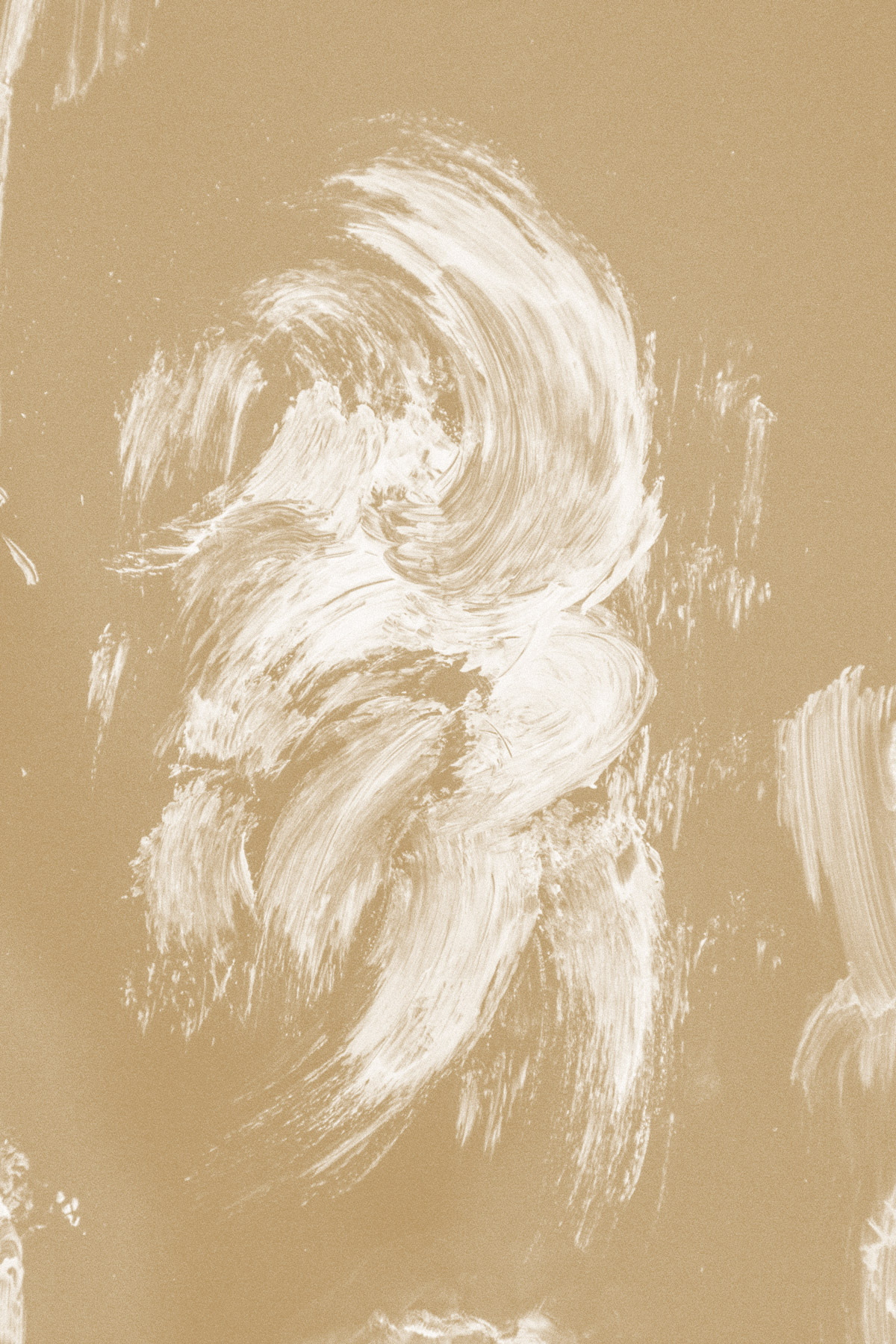
The wild was no longer beautiful but alien and frightening, indifferent to my life or death.
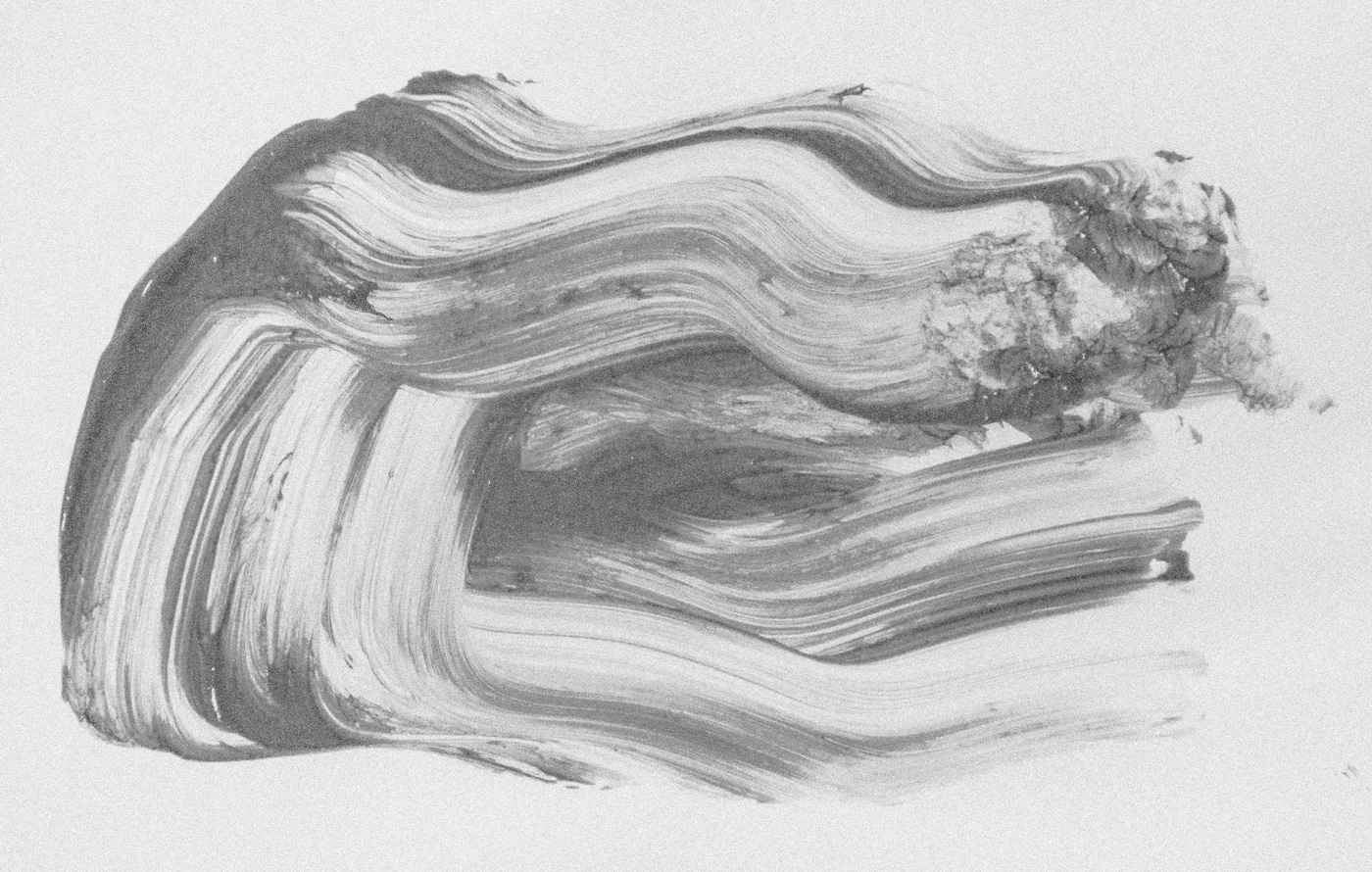
Perhaps the opposing positive and negative aspects of these winds—bringing good health but also destruction, ripening crops but burning down forests, summoning beauty but also madness, interweaving love and death—reflects something deeper about the nature of wildness.
You can’t have one aspect without the other. They are entwined, like winds and gods; that animistic entanglement of spirit, breath, and soul. The wind ornaments on antique maps—those curly-haired cherubs with puffing cheeks—might look quaint enough today, but they are reminders of a time when the gods of the air were real: wonderful, terrible entities that could ruin your harvest, destroy your house, or drive you into the depths of misery and despair. Again this brings us to that place where awe meets fear.
There have been times, alone in wild places, when I have felt it almost tangibly: that invisible borderline that is always tempting to step across—but not too far.
I felt it the first time I saw the Alps, that blinding white immensity, and had to turn my face away because it was too much to comprehend.
I felt it looking at the Sahara, which was like staring into an oven, and felt the curling of a fear that was worse than thirst.
I felt it in the remote Carpathian Mountains of Romania, following trails that frequently disappeared—the painted markers flaked off trunks or buried under snow—and passing the point of no return: a steep, rocky, icy climb I knew I could not get down again, meaning that the only option was to keep on going. I spent the three days of that journey in a kind of ecstatic reverie, exhilarated, my senses sharpened, happier and more alive than I remembered ever being before; and yet, on the final day—frozen, sodden, and exhausted—losing the path in a snow-choked gully with dense fog pouring down the sides, the dizzying unhumanness of the mountains finally got to me. The wild was no longer beautiful but alien and frightening, indifferent to my life or death. It was another point of no return. I had not quite crossed over.
I felt it when I met the Bora, the Foehn, the Mistral, and the other wild winds I went so far to find; or that came to find me. I still feel it at the rising of every day, nameless gusts that disrupt and disarray, disturbing our ordered selves both physically and psychically, teetering on the borderline between awe and fear—between being uplifted and being blown away.
